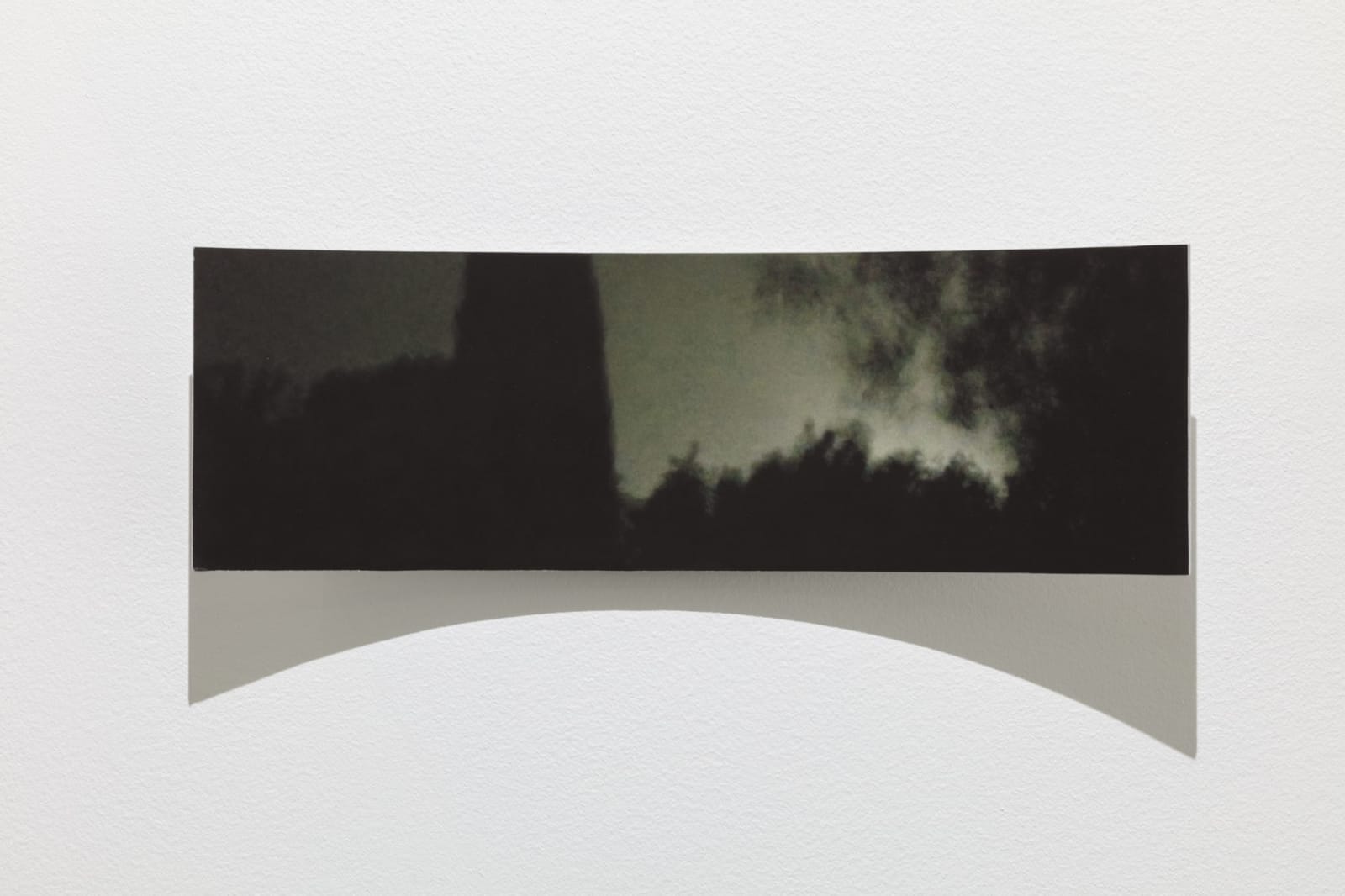Karl Dunér Swedish, b. 1963
300g acid-free matt cotton paper mounted on rolled aluminium plate.
Further images
A series of twenty-nine photographs and paintings linked to Aeschylus’ lost play Myrmidons.
The exhibition’s 29 PARABOLER share among themselves all of the preserved phrases and fragments from Aeschylus’ lost play Myrmidons. Some of the larger fragments are such minute pieces of papyrus with just a few legible syllables or part of a word, that they are impossible to translate. These parts are transliterated in Greek. The images seen in this exhibition are glued or painted on rolled aluminum, each with the same degree of curvature. The photos are night shots taken from the same area on the outskirts of a small town in Italy. Despite the missing gaps, the content of the play can be read from these fragments. As is often the case, Aeschylus builds upon Homer’s Illiad. We are on the battlefield outside Troy. The chief warrior of the Achaeans, Achilles, sits mute in his tent and refuses to participate in battle. He is probably upset that he didn’t get a share of the spoils of war. His soldiers, the Myrmidons, try in various ways to persuade him to put on his armor and resume the fight, but Achilles sits silently and for a long time refuses to even answer. Meanwhile, the Trojans under their leader Hektor seem to have gained the upper hand. The anchored fleet of the Achaeans is burned down and there are many indications that they are about to lose the war. Finally, he allows his friend and lover Patroklos to put on his armor and step out into the battle in his place. This is in the hope that his presence, albeit as Achilles’ double, will frighten and push back the enemy. A short time later, Achilles receives word that his friend has been killed in battle with Hektor. This is probably the turning point of the play. He mourns his dear friend and is ashamed to have driven him to death in his own armor.
JUNK YARD
A few miles from the Nile in central Egypt, at the end of the 19th century, the remains of the ancient city of Oxyrhynchos were found. The city had its golden age in the period between Alexander the Great’s conquest of Egypt in 342 B.C. and the end of the Roman period in the 4th century. With its canals connecting to the Nile, the city was an important trading post and served as a link to the Libyan oases. During the 7th century, the canal system was sanded over and the city slowly fell into oblivion.
In 1896, during excavations that are still going on today, a large ancient rubbish heap was found with over 400,000 papyrus fragments. Everything from everyday texts such as diaries, letters, horoscopes, procurement lists, drawings, court records, circus programs, certificates, and contracts of all kinds were discovered. Apocryphal and biblical texts as well as poems by Alkman and Sappho were also found in the rubbish heap along with texts by Plato, Homer, Simonides, Menandros, Euclid, Hesiod, and countless fragments by unknown authors from throughout the ancient period. The interpretation of all these small pieces has been going on since the 1930s and has so far resulted in over 80 large volumes in the Oxyrhynchus Papyri series published by Oxford University. Among these papyrus fragments are four that are thought to belong to Aeschylus’ long-lost breakthrough play Myrmidons P.Oxy 2163, P.Oxy 2256, PSI 1211 och PSI 1472.
Dunér’s exhibition PARABOLER also included a selection of new sound sculptures. For the exhibition, Jan Stolpe and Lars-Håkan Svensson have translated all preserved phrases and fragments. As the first Swedish translation, it is published in book form in a limited edition of 99 copies in collaboration with Ellerströms Text & Musik Förlag.
Karl Dunér (b. 1963) is a Swedish visual artist and theater director. His solo exhibition Islands (Öar) was shown in 2021 at Prins Eugen’s Waldemarsudde in Stockholm, and later at the Swedish Institute Paris, showing, among other things, a work with nine mechanical dolls. In his visually strong works, there are often interesting references to drama, theater, and literature. Since Dunér’s first exhibition of mechanical sculptures in 1997, a large part of his work revolves around Memory and the Art of Memory.







